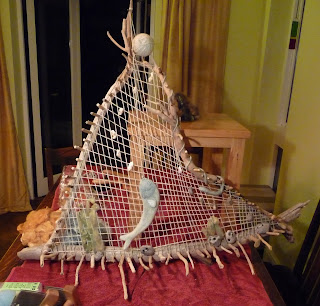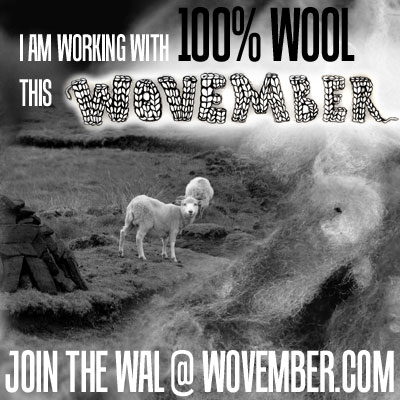Elinor Gotland is back home for Christmas and a well earned break from the panto season. Working morning, matinee and night is enough to exhaust even such a seasoned actor, or so she said to me. After our presents had been unwrapped, my companion did stay uncharacteristically quiet while I was busy in the kitchen, . Though I thought she might be going online for another read of her five star pantomime reviews, it turned out she'd been using her new phone to keep tabs on me.
"That blog of yours lacks adventure, Beaut." she said, sitting down at the table, pouring a gin and tonic and helping herself to festive nibbles.
"Oh no it doesn't."
"Oh yes it does. No suspense, no narrative drive, no dynamic tension. You need to liven things up."
I decided peeling the sprouts took higher priority.
"You're the dramatist, Elinor. While I do the veg, you can earn your Christmas Dinner. Go on, use that phone to sprinkle some fairy dust on this evening's blog."
****************************************************
Is everyone sitting comfortably, wrapped up warm in their winter woolies? We Gotland sheep have fleece lovely as storm clouds with silver linings and cosy as toast. As the wind howls outside, the rain beats down on your roof and the long night draws in, pull the curtains, turn up the thermostat and bang a couple of mince pies in the microwave.
Let me tell you a tale, a great saga of Norse fibre.
Once upon a time, there lived a novice spinner. Let us call her Tigerella, for like the tomato of that name, she was unusually green. Despite her incompetence, her heart was set upon spinning fingering weight three ply yarn, just like the other spinners. Now, Tigerella's skills only ran to hand carding rolags from the wool of primitive sheep breeds, so though she dreamed of spinning a smooth, silvery yarn from her special, Gotland fleece, she only ended up with balls of hairy grey string.
One evening, as she sat sighing at her wheel, her Fairy Gotmother appeared.
"It's all in the preparation, Beaut."
Elinor scuffled about in the box, looking for the last mint chocolate.
"That blog of yours lacks adventure, Beaut." she said, sitting down at the table, pouring a gin and tonic and helping herself to festive nibbles.
"Oh no it doesn't."
"Oh yes it does. No suspense, no narrative drive, no dynamic tension. You need to liven things up."
I decided peeling the sprouts took higher priority.
"You're the dramatist, Elinor. While I do the veg, you can earn your Christmas Dinner. Go on, use that phone to sprinkle some fairy dust on this evening's blog."
****************************************************
Is everyone sitting comfortably, wrapped up warm in their winter woolies? We Gotland sheep have fleece lovely as storm clouds with silver linings and cosy as toast. As the wind howls outside, the rain beats down on your roof and the long night draws in, pull the curtains, turn up the thermostat and bang a couple of mince pies in the microwave.
Let me tell you a tale, a great saga of Norse fibre.
Once upon a time, there lived a novice spinner. Let us call her Tigerella, for like the tomato of that name, she was unusually green. Despite her incompetence, her heart was set upon spinning fingering weight three ply yarn, just like the other spinners. Now, Tigerella's skills only ran to hand carding rolags from the wool of primitive sheep breeds, so though she dreamed of spinning a smooth, silvery yarn from her special, Gotland fleece, she only ended up with balls of hairy grey string.
One evening, as she sat sighing at her wheel, her Fairy Gotmother appeared.
"It's all in the preparation, Beaut."
“Good
grief!” cried Tigerella, quite forgetting her manners.
“I’m
parched. Is that tea you're drinking?”
“Gosh, you
speak English! I thought Gotland sheep
came from Sweden.”
“Actually, my family have lived in Wales since
the 1950s. Grandma never got further
than “Ych y fi!”, but the rest of us have no trouble with languages. Of course, being an actress, I'm on the road so
much, I’d call myself an international citizen. It's dreadful thirsty work, travelling, you know.”
At long last, a cup of tea was poured, though it wasn't quite what such a special occasion demanded.
“You wouldn’t have a drop of sloe gin to go with that? It’s the thing I miss most when I’m on tour.”
“You don't miss your flock? I’d heard sheep pine without company.” Duw, that Tigerella was a slow hostess, still asking silly questions instead of fetching the bottle.
“Never really fitted in on the farm, to be honest, Beaut. Got a taste for the limelight when I was only a lamb; stole the show in the Nativity Play and went on to become world famous." You could grow old waiting for Tigerella to refill an empty tea cup, so there was no point in hanging about much longer. "I’ve come to lend a helping hoof with your spinning. First things first."
With a wave of her wand, that kindly Fairy Gotmother summoned up this educational illustration.
“Never really fitted in on the farm, to be honest, Beaut. Got a taste for the limelight when I was only a lamb; stole the show in the Nativity Play and went on to become world famous." You could grow old waiting for Tigerella to refill an empty tea cup, so there was no point in hanging about much longer. "I’ve come to lend a helping hoof with your spinning. First things first."
With a wave of her wand, that kindly Fairy Gotmother summoned up this educational illustration.
"Washing a Gotland fleece needs a long soak and no
agitation."
A few days in a fermented suint bath cleaned the Gotland fleece beautifully. It had barely dried out, before Tigerella was reaching for her hand carders. Just in the nick of time, her Fairy Gotmother appeared again, all glamorous in huge sunglasses and a long, turquoise, chiffon scarf.
“Well, I won’t say I wouldn’t have rinsed it better myself, but that’s
not a bad effort, Beaut.”
“Off somewhere special?”
“Copenhagen. We’ll be filming on location, tomorrow.
‘The Girl with the Sheep Tattoo.’”
“Ooo, I think I’ve read the book. Isn’t that the one about
the cartel of rich spinners? They pay the Midnight Shearer to steal the best
rare breed fleeces from all over Europe, then smuggle them out by sea.
But why are you going to Denmark? Shouldn’t you be shorn in Sweden?”
The Fairy Gotmother lifted her shades and her glare was colder
than the North Sea.
“Typecasting wrecks careers, Beaut. What’s more, nude scenes
are best left to the shearlings. I’ll be playing the barmaid who charms
the Danish Customs and Excise agents, while Captain Crovect ups anchor and
escapes on the tide.”
The roar of a Bugatti Veyron is not often heard on such a
small, suburban street.
Tigerella asked for hand combs for her birthday and pored over instructional videos on YouTube. Then she combed and drafted the fleece as best she could, gave her wheel a good oiling and concentrated madly on spinning finely. The carpet around her grew covered with fragments
of broken singles, damp with sweat and tears. One morning, when she dragged herself out to sit in the garden and cry into another cup of tea, there was her Fairy Gotmother, poised in the yoga asana ‘Standing Wool’.
Her
calm control only exacerbated Tigerella's irritable and despondent frame of mind.
In the end, she could bear it no longer.
In the end, she could bear it no longer.
“Are
you using your tail to balance?”
Her Fairy Gotmother opened one eye.
“Gotta
make the most of all your assets, Beaut.
Ascend to a higher level. Relax.”
Saying
this, she disappeared with the morning dew.
Tigerella howled at the empty
garden. “I thought you said you would
lend a helping hoof!” The breeze blew a faint reply.
“Just spin the way I told you, you complete muppet.”
Moving up to the unfamiliar high ratio on the flyer wheel put in enough twist to hold a fine single together. Clutching the combed wool less tightly let the
fibres flow more evenly. Tigerella's Gotland
singles were still fuzzy, but fine enough to make three ply laceweight yarn
with all the lustre she had dreamed of. She clasped the finished skein to her bosom, remembering her Fairy Gotmother in an agony of remorse. How she regretted her unappreciative
attitude! Why, oh why, had she not been more liberal with the tea and sloe gin?
***********************************************************
After dinner, I turned from the computer and paused before clicking the 'publish' button.
"You know, Elinor, I'm sure I've heard this story before."
"You know, Elinor, I'm sure I've heard this story before."
"Fairy tales deal with with universal themes, Beaut. Core elements that resonate through time."
"How does it end, though? Does Tigerella meet a handsome prince?"
"No, nor a wicked witch, she's a lot more fortunate than Rapunzel."
"But that story has a lovely ending."
"Hmmmpf. 'Happy ever after' is just code for 'Ask no questions and you'll be told no lies'."
"So, what did happen to Rapunzel?"
"So, what did happen to Rapunzel?"
"If you must know, her Rodney of a prince used their castle as security on loans from at least three ogres. No surprise when all of them came out for blood."
"Oooooh, scarey ending."Elinor scuffled about in the box, looking for the last mint chocolate.
"Well, Rapunzel was doing ok, last I heard . After the bailiffs had been in, she set up a salon in her old Tower. Very popular for haircuts and extensions and I think she's got a dragon doing blow drys. "



















































